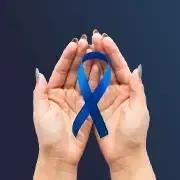The BRCA Genes: Understanding Their Role in Breast and Ovarian Cancer
In This Article
The BRCA Genes: Understanding Their Role in Breast and Ovarian Cancer
Pooja
Updated on May 06, 2024
Medically verified by Dr. Arya
Fact checked by Dr. Pournami

Oncology
6 min
Are you aware of BRCA Genes? Do you know the risk factors associated with it?
Well, Karepedia is here to help you with it. We will make you aware about the significance of BRCA genes in breast and ovarian cancer.
What Is BRCA?
- BRCA means Breast Cancer Gene. BRCA1 and BRCA2 are two different genes which have a significant impact in developing breast cancer.
- BRCA Genes do not cause cancer, instead they prevent breast cancer.
- They help in building and repairing the DNA Breaks which causes cancer and uncontrolled growth of tumours. Due to this nature, it is known as tumour suppressor genes.
- But in some cases, these genes do not work properly. This does not function properly when the gene is altered or broken. This is termed as Gene Mutation.
- According to statistics, it is said that 3 % of breast cancers (about 7,500 women per year) and 10% of ovarian cancers (about 2,000 women per year) is caused due to inherited mutations in the BRCA1 and BRCA2 genes.
BRCA Mutations
According to statistics, one in every 400 people have BRCA1 or BRCA2 gene mutations. BRCA Mutation can happen when DNA that makes up the gene is broken.
Gene may lose its ability to repair broken DNA and prevent cancer when mutation happens.
So, people with gene mutation have a high probability of getting breast cancer and often develop at a younger age. If one is affected with gene mutation, he/she may potentially pass on to the next generation.
Risks Associated with BRCA Mutations
Here are risk factors that you must not miss:
- For women with mutations there is a heightened risk of developing breast cancer over their lifetime.
- Research indicates that between 55 to 65% of women with the BRCA1 mutation could face breast cancer before turning 70.
- While these numbers may appear alarming it's important to note that more than 10% of breast cancer cases are linked to a BRCA mutation.
- Additionally, early detection plays a role in the treatment of breast cancer even for individuals carrying the BRCA1 or BRCA2 mutation.
- By age 70, 45% of women carrying the BRCA2 mutation may develop breast cancer.
- It's noteworthy that women with either BRCA1 or BRCA2 mutations who undergo treatment for breast cancer have an increased risk of experiencing a malignancy, known as reoccurrence.
- Moreover cancers associated with the BRCA1 mutation have a likelihood of progressing into negative breast cancer—a more aggressive form that poses challenges in terms of treatment.
- While these findings may spark concern it's essential to remember that, more than 10% of women diagnosed with breast cancer have a BRCA mutation.
- Importantly when breast cancer is detected early it can be effectively treated, even if it involves a BRCA1 or BRCA2 mutation.
What is BRCA1 & BRCA2 Genetic Test ?
BRCA1 and BRCA2 mutation testing can yield three distinct outcomes: a positive result, a negative result, or a variant of unknown significance.
A positive test: This result indicates that a person acquired a known dangerous mutation in BRCA1 or BRCA2 (referred to as "pathogenic" or "likely pathogenic" variants on laboratory test reports) and is at a higher risk of getting specific cancers.
However, a positive test result cannot predict whether or not the individual will get cancer. Some persons who inherit a harmful BRCA1 or BRCA2 mutation do not get cancer.A positive test result may have significant consequences for family members, including future generations.
It is possible for both sexes to pass on a detrimental BRCA1 or BRCA2 variation to their offspring, regardless of whether they go on to acquire cancer. There is a 50% chance that each child will inherit a parent's variation.
An individual who has inherited a detrimental variant of BRCA1 or BRCA2 may have a higher chance of having the variant themselves if they are their blood relative. For instance, the mutation has a 50% chance of being inherited by each of that person's full siblings.
An individual may very rarely test positive for a dangerous variation that they did not inherit from either parent.
De novo, which means "new," is the term used for this. A variation of this kind is one that originated from a parent's germ cell (either an egg or sperm) and permeates every cell of the person who developed from that cell.
The variant may be inherited by offspring of an individual with a de novo variant (but not by their siblings).
Negative Result: Depending on the individual's medical history, both personal and family, as well as the possibility that a dangerous mutation runs in the family, a negative test result can indicate a number of different things.
A clear negative test result indicates that the examined individual does not possess a dangerous BRCA1 or BRCA2 mutation if a close blood relative does.
VUS (Variant of Uncertain Significance) Outcome: A mutation in BRCA1 or BRCA2 that is uncommon in the general population and which has not been linked to cancer in the past can occasionally be discovered by a genetic test.
As the potential danger associated with this particular genetic mutation is unknown, the test result type in question is referred to as "a variant of uncertain significance", or VUS.
A person receiving genetic counselling can better grasp the potential implications of a VUS in BRCA1 or BRCA2 for their cancer risk.
A person can learn more about the potential implications of a VUS in BRCA1 or BRCA2 on their risk of cancer through genetic counselling.
How to Reduce the Risk of Cancer in a Person who is inherited with a harmful BRCA1 or BRCA2 Gene Variant ?
For those who have inherited a dangerous BRCA1 or BRCA2 variant, there are various ways to lower their risk of developing cancer. Enhanced screening, chemoprevention, and risk-reducing surgery (also known as prophylactic surgery) are some of these.
 5 min
5 minYour Genes And Prostate Cancer Risk: What To Know
 10 min read
10 min readGenetic Insights Into Personalised Cancer Treatments
 6 mins
6 minsUnderstanding Lynch Syndrome and Its Cancer Risks
Get a Callback Now
- Risk-reducing Surgery: Removing as much of the "at-risk" tissue as possible is the goal of risk-reducing, or prophylactic, surgery.
In order to lower their chance of developing breast cancer, women may elect to have a bilateral risk-reducing mastectomy.
Surgery to remove a woman's ovaries and fallopian tubes can help reduce her risk of ovarian cancer.
By removing a source of hormones that can promote the growth of some forms of breast cancer, ovariectomies may also lower the risk of breast cancer in premenopausal women.
- Chemoprevention: The use of medications to lower the risk of cancer is known as chemoprevention. The Food and Drug Administration (FDA) has approved two chemopreventive medications, tamoxifen and raloxifene, to lower the incidence of breast cancer in women who are at increased risk.
However, it is unclear how these medications will affect individuals who have dangerous BRCA1 or BRCA2 mutations.
Menopausal symptoms, blood clots, stroke, and an increased risk of endometrial cancer are among the possible side effects of these medications.
Medical Options for People with BRCA1 and BRCA2 Mutations
There are many therapeutic choices available for people with breast, ovarian, prostate and pancreatic cancer.
These alternatives have advantages and cons and you ought to examine them with a qualified specialist who is well aware of restorative administration for individuals with BRCA1 or BRCA2 mutations.
Breast and Ovarian Cancer Risk Management
Women
Breast and Ovarian Cancer is found to happen basically in women with BRCA1 and BRCA2 transformations.
The most successful strategy to treat breast and ovarian cancer in ladies with BRCA transformations is surgery to remove the breasts (mastectomy) and ovaries and fallopian tubes.
- Using drugs that decrease the chance of creating ovarian or breast cancer, such as aromatase inhibitors and tamoxifen and raloxifene.
- Annual screening for breast cancer with mammography starting at an early age.
- Observing the commonplace appearance and feel of your breasts and instantly telling any changes to your physician.
- In order to avoid more cancers, BRCA hereditary testing can be done for ladies with breast or ovarian cancer.
Men
Males having BRCA1 or BRCA2 mutations are more susceptible to breast cancer than other males.
In case a male individual harbours a BRCA1 or BRCA2 mutation, the physician may suggest the following:
- Training in and instruction about breast self-examination beginning at age 35.
- Clinical mammograms conducted annually beginning with age 35.
- Think about getting yearly mammograms starting at age 50, or ten years younger than the family's first known male breast cancer case, whichever is newer.
Human malignant tumours, or cancer, are inhibited by the genes BRCA1 and BRCA2.
These genes do not reduce cancers as they should when they alter, or get altered.
Thus, the chance of developing cancer is increased in those who have mutations in the BRCA1 or BRCA2 genes.
Women who carry this mutation are more likely to develop ovarian or breast cancer.
Source Links
National Breast Cancer Foundation
National Cancer Institute

